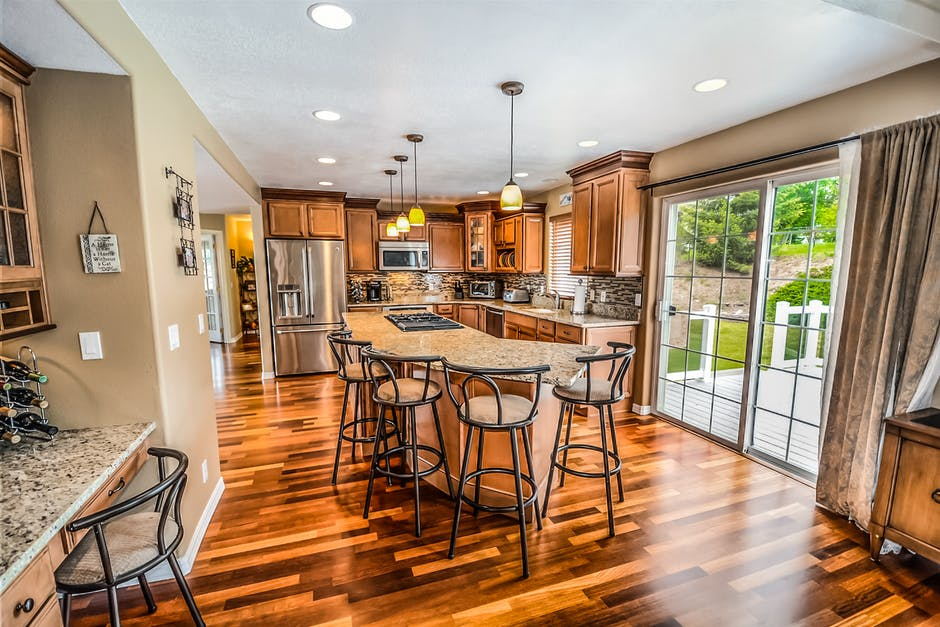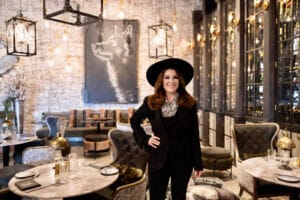American households, if they’re going to go the hardwood floor route, are fifty-fifty on engineered wood and natural hardwood flooring. One reason for this is a lack of knowledge about the different types of hardwood flooring available.
The typical hardwood flooring options, in most American’s minds, are either oak, hickory, or maple. It’s unlikely that most people buying hardwood floors even know of the Janka scale of durability or hardness.
Either way, the benefit of being able to sand and refinish hardwood flooring multiple times is a draw for many. If that’s the case for you, then so is this list of the best hardwood flooring options.
Keep reading to find out which is best for your home!
Oaks
Oak hardwood species used for flooring are the darling of most people’s homes. However, you might not know there are in fact two species of oak used often as flooring solutions.
Red Oak
Red Oak is by far the most common flooring choice domestically available. With a Janka rating of 1290 and its rusty, pink, or golden-red coloration, it suits most styles of home and decor well.
White Oak
White oak is one of the types of hardwood flooring with a tight fine grain. It’s harder than its red oak cousin, with a rating on the Janka scale of 1360. This means it’s good for spaces with high traffic — including businesses.
Because it has a grey coloration much of the time, without any traces of the reds you find in red oak, it can add a unique touch to many chíc decors.
Hickory
Hickory is a type of hardwood flooring often valued for its rather high Janka rating of 1820. Because of this, it was once the wood flooring of choice for roller rinks, school gymnasiums, and other abusive activities.
Don’t let the durability turn you off to it, however. Hickory has a beautiful grain and color range that’s hard to beat.
There are four trees that supply hickory wood floor material. They are the:
- Pignut
- Mockernut
- Shagbark
- Shellbark
The only tree you’ll find on the Janka scale with more hardness and durability is the Brazilian Cherry, which we’ll get to soon.
Ash
Ash flooring has a hardness rating close to white oak. It has a blond appearance somewhere between white and red oak. It too is good for moderate to heavy foot traffic, but you shouldn’t be planning to abuse it excessively.
Cherry
People value cherry trees and seek after them the world over for a variety of reasons. Their blooms are world-renowned as a tourist attraction. They draw millions of visitors each year to Japan, Washington D.C, Amsterdam, British Columbia, the Jerte Valley in Spain, and more.
American Cherry
Beyond its blossoms and its fruit, cherry trees create some of the most beautiful and striking floors to add to your space. The wood adds instant warmth and luxury to any space.
Speaking of luxury, American Cherry is not well suited to an area of high traffic or pets. With a rating of only 950, it’s a luxurious indulgence.
Brazilian Cherry
Unlike its American cousin, Brazilian Cherry is an extremely tough natural wood. With a score on the Janka scale of 2820, it beats any other hardwood on this list with the exception of one.
Why does it have such a huge difference in rich red coloration and hardness to the American Cherry? That might be because the Brazilian cherry isn’t a cherry at all. Instead, it’s part of the legume family, and also known as courbaril, locust, or jatoba wood.
Maple
Maple has the interesting distinction of being the official hardwood of bowling alleys and hardwood basketball courts. It can accomplish this because of the hardness ranking of 1450, making it excessively durable for almost any situation you plan to throw at it.
Maple is very resistant to dents and has a wonderful, soft, pale-blond coloration making it attractive to homeowners looking for a long-term investment.
There are two hard maple trees used in making hardwood flooring. Those are the sugar maple and the black maple. Like cherry, a very useful and tasty byproduct of the sugar maple is maple syrup.
Walnut
The walnut tree has been a prized possession of multiple cultures over millennia. Not only does it provide a highly nutritional food product, but it also makes a fantastic and enduring wood material for furniture and flooring.
American Walnut
Softer than red oak, the American walnut makes up for it in a delicious, dark, and dense appearance. Though it is a slight bit on the soft side, the density of its grain also gives it a good shock resistance, preventing dents from falling objects. This doesn’t, however, exempt it from suffering damage from heavy furniture making ruts or from deep scratches.
Brazilian Walnut
Brazilian walnut is again one of the strongest, densest, and difficult-to-damage woods available. Brazilian walnut’s known to have the same fire rating as steel and concrete. It’s also resistant to most of the pests that cause homeowners problems, including termites.
Like Brazilian cherry, it also has a crazy high Janka scale rating of 3684. It also isn’t a true walnut species, although the wood resembles that of true walnuts.
Eucalyptus and Bamboo: The Hardest Hardwood?
Despite finding use as hardwood flooring options, neither eucalyptus nor bamboo is a true wood product. They’re hard grasses, which get some of their strength from the use of resins.
Don’t be turned off by that, however. These two offerings range from 3800 to 5000 on the Janka scale. That means they’re potentially harder and denser than any hardwood we’ve covered.
Another bonus, they make really cheap floors for those on a budget. Bamboo and eucalyptus are easy to grow and grow quite rapidly. This is a great option for sustainable building practices among other things.
The Many Types of Hardwood Flooring
So, did you learn something about the various types of hardwood flooring available today?
We know you did because AZ Big Media tries its best to find information that matters most to you and your wallet. In real estate and lifestyle for Arizonans, you can’t beat AZ Big Media.
Check out why we’re your go-to guide for all things Arizona!




